This is the Rolex Explorer Ref 214270. The current Explorer model in the Rolex catalogue and heir to an impressive legacy. But is it the right Rolex Explorer for you? It’s been almost 70 years since this now iconic collection made its debut. During that time the Explorer has undergone several evolutions. In this article, we take a look at some of the key references in the model’s history. And try to help you figure out which Rolex Explorer is best for you. Read on to learn more about this awesome tool watch.
Navigation:
We’ve covered most Rolex Explorer references in this article. Use the quick links below to jump to a particular model.
1. A (Very) Brief History Of The Rolex Explorer
2. Ref 6350 & Ref 6150 – The First Rolex Explorers
5. Rolex Explorer Ref 14270 & Rolex Explorer Ref 114270
6. Rolex Explorer Ref 14270 Blackout
8. Which Is The Best Rolex Explorer For You?
A (Very) Brief History Of The Rolex Explorer
Many people know the Rolex Explorer as the watch worn by Sir Edmund Hilary when he summited Mt Everest. The first climber in recorded history to do so. Only problem is, Hilary wasn’t wearing a Rolex at the time. Nor did the Rolex Explorer model exist yet.
It is true that Rolex was a sponsor of the 1953 British Mount Everest expedition. And that it gave each member a watch to wear throughout its duration. But these were not Rolex Explorer watches. Rather they were Rolex Oyster Perpetuals, modified for the epic undertaking. They also weren’t the only watches on the mountain.
- Sir Edmund Hillary and Tenzing Norgay in 1953. Credit: AP
As stated earlier, when Hillary reached the summit on the 29th of May 1953, he was not wearing his Rolex. That fact is now well established. He had left it at basecamp – for reasons unknown. Instead he wore his own personal English-made Smiths De Luxe. Of course, Hillary wasn’t climbing alone. Right behind him was his climbing partner, Tenzing Norgay. And he definitely had his special-issue Rolex with him.
So, regardless of who was wearing it, a Rolex watch had been to the highest point in the world. And survived to tell the story. Not an opportunity one of the world’s greatest marketers was going to miss out on.
- An advertisement for the Rolex Explorer from 1967. Credit: Jake’s Rolex World.
Now, if you follow the official timeline from Rolex, the Explorer made its debut later that same year. An icon was born. History made. The whole nine yards. In reality, it was a bit more nuanced than that.
Rolex had been equipping various expeditions since the 1930s with Oyster Perpetuals. At the end of each one, they would gather user feedback to identify areas for improvement. Leading to the development of the brand’s Professional category of watches. Think the Rolex Submariner. The Rolex GMT-Master. The Rolex Milgauss. There’s a reason they all came to market in the same era.
In practice, this also meant that some references had short-lived production runs. In the 1950s Rolex was a much more agile company than it is today. This translated into releasing models to test the market. And then modifying them based on customer feedback. A good example of this as pertains to the Rolex Explorer is the Ref 6298 also launched in the early 1950s.
- An example of the Rolex Oyster Perpetual Ref 6298 from circa 1953. Credit: Phillips.
This model is sometimes referred to as a “pre-Explorer”. It was an update of the Oyster Perpetual Ref 6028 and boasted a COSC-certified movement. And a large (for the time) 34.5mm case. Rolex also produced this watch with an Explorer style dial. Meaning the famous 3-6-9 layout we will discuss in more detail shortly. But it is not a Rolex Explorer.
Of course, back then, quality control was not as strict then as it is now. Nor was Rolex a vertically-integrated manufacture. Lots of parts came from outside sources and often found their way into more than one reference. For example, production of the Ref 6298 continued after the Rolex Explorer made its debut.
So, what was the first official Rolex Explorer reference?
Ref 6350 & Ref 6150 – The First Rolex Explorers
Rolex began developing and marketing its new adventure-oriented watch in the early 1950s. This included experimenting with different dial layouts. As well as case sizes, and construction. With the successful summit of Mount Everest, it was time to go mainstream with a production model.
Rolex had already registered the ‘Explorer’ trademark on January 26, 1953. Likewise, it had also experimented with the 3-6-9 dial configuration in that same year. This put Rolex in prime position to capitalise on the successful summit of Everest in May. And the global fanfare that followed. Later that same year, Ref 6350 and Ref 6150 would go into production.
- A Rolex Explorer Ref 6350 with honeycomb dial dating to 1953. Credit: Phillips.
These are the first production references to use the 3-6-9 layout. And feature the ‘Explorer’ name on the dial. Although, as you will see in a minute, not everyone agrees that this was the first Explorer.
The two models are almost identical but for a few key differences. They both ran on the self-winding A296 movement. Which meant a bubble back case back to accommodate the height added by the rotor. And they both measured 36mm in diameter excluding the crown.
But Rolex did some more fine tuning with the Ref 6350, getting it certified as a chronometer. Hence the stamping of the words ‘Officially Certified Chronometer’ above six o’clock. The Ref 6150 meanwhile features the word ‘Precision’.
- The Rolex Explorer Ref 6150 worn on the 1955 Kanchenjunga Expedition by George Band. Credit: Phillips.
The goal with the Rolex Explorer was to optimise legibility. The steel case measured a robust 36mm. The black dial featured a uniform 3-6-9 Arabic numeral layout. The use of luminous paint on the hands and the indexes ensured visibility in all conditions. Some versions of the Ref 6350 featured a special honeycomb dial. Those rarer models are particularly coveted by collectors.
They don’t come up for sale often though. Phillips, market leaders in the watch auction world, have sold a total of 7. That four Ref 6350s and three Ref 6150s. That includes this super cool Ref 6150 worn on the 1955 Kanchenjunga Expedition by George Band. (Pictured above.) It hammered for CHF 200,000 in 2017.
Nowadays, we call all watch dials that feature a 3-6-9 Arabic numeral layout ‘Explorer’ dials. That speaks to how successful – and iconic – this initial design has become. Of course, Rolex wasn’t done yet. As with all its exceptional models, it would continue to iterate and improve over the years to come.
We’re not going to cover every variation of the Rolex Explorer here. But as promised, we will cover all the key models so you can decide which one is best for you. So, here we go.
Rolex Explorer Ref 6610
The next major milestone in the Rolex Explorer journey to greatness would come in 1956. That was the year the Ref 6610 made its debut. A watch which some claim is actually the first true Explorer. Although that doesn’t fit with the official timeline from Rolex.
The Rolex Explorer Ref 6610 brought with it some important evolutions and improvements. The earlier A296 caliber movement made way for the new caliber 1030. Rolex’s first in-house designed and built movement. It was thinner than its predecessor, which meant a slimmer case and no more bubble back. It was also a certified chronometer, as you would expect.
- A Rolex Explorer Ref 6610 with the sought-after “red-depth” dial. Credit: Phillips.
The design of the dial also showed some subtle aesthetic changes. Its black background was now glossy and featured gilt print. Along with the luminous 3-6-9 numerals. The design was also further standardised with Mercedes-style hands. And an inverted triangle at the 12 o’clock. And the seconds hand painted white.
In typical Rolex fashion, there was also a rare dial variation with this reference. The so called “red depth” model. On this version the water resistance rating (50m) appears in red under the Explorer name on the dial. For fun Rolex also did another variation with the depth indicator in white. Both are rare. But the red version is definitely the more sought after of the two.
- A close up look at the red depth line on the Ref 6610. Credit: Phillips.
The Ref 6610 had a very short production life and there aren’t too many in circulation. As such when they do come up – at auction or for private sale – they tend to command pretty good prices. For example, the red depth model shown above sold at Phillips for CHF 65,000 in 2018. Even with the softening of the vintage market it would command an even greater premium today.
Rolex Explorer Ref 1016
So far, the models we’ve looked at have all had pretty short production runs. Meaning not a lot are in circulation in the market. Not so with this next reference.
Coming to market in 1963, the production life of the Rolex Explorer Ref 1016 spanned more than 25 years. For most, this reference will be their introduction to the world of the vintage Explorer.
- A Rolex Explorer 1016 from 1965.
Don’t for a second think that makes this model ubiquitous or less intriguing though. Rather, it provides a fascinating insight into the evolution of the Explorer. As you will come to see, two of the exact same reference can look very different from one decade to the next.
In the early years, the Ref 1016, such as the one shown here from 1965, looked much like the Ref 6610. The case size remained an ideal 36mm. The black dial was glossy, and the markers gilt. There were of course subtle differences too though.
The hands on the Ref 1016 were less elongated than on the Ref 6610. And tritium illuminated the dial instead of poisonous radium. Although, this being Rolex in the 1960s, there were will still some Ref 1016s made with radium dials. No point in letting existing materials go to waste after all.
Also, there was a subtle revision to the text above six o’clock. Previous references read ‘officially certified chronometer’. On the Ref 1016 this changed to ‘superlative chronometer officially certified’. The same text that appears on the dial of the current Rolex Explorer Ref 214270. Again, this likely didn’t happen in a uniform fashion. I’m sure there’s a few Ref 1016s out there with the older text on the dial but I haven’t confirmed this.
- A side-by-side comparison of a Rolex Explorer Ref 1016 from 1965 versus one from 1987.
The movement inside was also different. The self-winding calibre 1030 became the self-winding calibre 1560. The following decade this would change again to the calibre 1570. Another upgrade which introduced hacking seconds. And water resistance increased from 50m to 100m.
As the decade progressed, the glossy black dial on the Ref 1016 became matte. And crisp white font replaced the gilt indexes. The design continued to evolve over the remaining production life of the Ref 1016. Subtle evolutions that formed the blueprint for the current Rolex Explorer.
The level of variance and nuance in the Ref 1016 series makes it a dream for collectors. But also a potential nightmare. Especially for novices who may not be aware of how certain details can impact value. As always, do your research and make sure you buy the seller as much as you buy the watch itself.
- Later versions of the Rolex Explorer Ref 1016 – such as this one from 1987 – show a much more contemporary aesthetic.
As far as pricing, it’s a pretty wide scale. Values have shot up over the past few years, pulled along by the general rising popularity of vintage. But with such a long production run, certain series are more desirable than others.
As a general rule of thumb, ‘newer’ Ref 1016s are cheaper. Meaning models made in the late 70s and into the 80s. Aim for somewhere between US$12,000 – US$15,000. For earlier models, think more like US$17,000 – US$23,000. Again though, this depends on several factors, including condition, etc.
Now, we can’t close out this section without giving special mention to a rare Ref 1016. And when we say rare, we mean the likelihood of seeing one in person in your lifetime is almost nil. We are of course referring to the super cool Rolex Space-Dweller. Produced for Japan only, it commemorated a visit by NASA’s Project Mercury astronauts in 1963. The watch is identical to a normal Ref 1016 from the time but for one key detail. Instead of the name ‘Explorer’ appearing on the dial, it says ‘Space-Dweller’ instead. Very cool. Also very expensive.
- An excellent example of the super rare Rolex Space Dweller. Credit: Amsterdam Vintage Watches.
Rolex Explorer Ref 14270 & Rolex Explorer Ref 114270
Following a production life of some 26 years, Rolex discontinued the Ref 1016 in 1989. In its place came the Rolex Explorer Ref 14270. This model introduced some modern updates. For example, sapphire glass in place of acrylic crystal. A newer movement in the form of the self-winding Calibre 3000.
Rolex also made some stylistic changes, which carry through to the current Ref 214270. The matte black dial became glossy again like on the Ref 6610. And white gold framed the indexes, further adding to the luxury appeal of this once stoic tool watch. The case was also chunkier, albeit still 36mm in diameter.
- The Rolex Explorer Ref 14270 offers a great modern Rolex at a reasonable price. Credit: Monochrome Watches.
Towards the end of the 1990s, Rolex switched from tritium to Super Luminova for the dials. The difference is pretty easy to spot, even without turning the lights off. On the earlier tritium versions, the words “T Swiss – T < 25” appear below 6 o’clock. You shouldn’t expect to pay too much of a premium for one over the other.
The Ref 14270 broadened the appeal of the Rolex Explorer beyond the typical tool watch crowd. It was later updated by the Ref 114270 in 2001. On the outside this model appeared the same as its predecessor. Inside though was the updated self-winding Calibre 3130 movement. This resulted in an increase in case thickness of 0.5mm (from 11.5mm to 12.0mm).
- The almost identical Rolex Explorer Ref 114270. Credit: doramas via Rolex Forums.
You can find good examples of the Ref 14270 and Ref 114270 with minimal searching. A pre-owned Ref 14270 will run you somewhere between US$4,000 – US$6,000. While a Ref 114270 will cost a touch more. Say between US$5,000 and US$7,000. Again, depending on condition, etc.
From a collector’s point of view though, neither reference is of much interest. There is one notable exception to this of course. The fabled Rolex Explorer Ref 14270 Blackout.
Rolex Explorer Ref 14270 Blackout
For reasons unknown, Rolex made a simple yet powerful change to the dials of the first Ref 14270s. Instead of white, black enamel filled in the iconic 3-6-9 Arabic hour numerals. All the other hour markers, including the upside-down triangle remained white. It was a striking if unusual look against the glossy black dial. The dial printing was also done in silver as opposed to white.
One could argue though that it was detrimental to legibility. Which may explain why Rolex shortly changed back to white for the Arabic numerals as well. It’s thought that only the first batch of Ref 14270 watches came with Blackout dials. The serial numbers of these watches usually start with ‘E’ or ‘X’. That corresponds with production years 1990 and 1991.
- A Rolex Explorer Ref 14270 with ‘Black Out’ dial. Credit: Analog Shift
Exact production quantities are not known but the Blackout Explorer is rare. In fact, it could be one of the rarest examples of a modern Rolex. Which makes it a grail watch for many collectors who are willing to pay through the nose for one in good condition. Beware though, as after-market modified Ref 14270s sometimes pose as the genuine article. Always do your research and check serial numbers. And if in doubt, walk away.
For pricing, I would say budget at least US$18,000 – US$20,000. Assuming you can find one that someone is willing to sell to you.
Rolex Explorer Ref 214270
It might be hard to believe but the current Rolex Explorer Ref 214270 is already ten years old. Although, as is always the case with Rolex, there has been some subtle changes over the years. We’ll get to those in a minute. First though, let’s talk about the big change that accompanied this model’s debut.
After close to six decades of consistency Rolex made an unexpected modification. The 36mm case – long a hallmark of the Rolex Explorer – grew to 39mm. The reason for this change was obvious. Back then the big watch trend was starting to build steam, led by brands like Panerai and Hublot. The 36mm case of the Explorer was too small for tastes at the time. And so, much to the despair of purists, Rolex decided to change it.
- The Rolex Explorer Ref 214270 with Mk2 dial. Credit: Professional Watches.
Nowadays of course, many watch lovers would prefer the Rolex Explorer to go back to 36mm. Or at least for Rolex to introduce it as a second option. Whether that happens or not we’ll have to wait and see. Most punters suggest it’s unlikely though and I tend to agree.
In any event, while many welcomed the larger case size at the time, the Ref 214270 was far from a home run for Rolex. The case was bigger, but length of the hands appeared unchanged. Which meant they looked disproportionate to the dial. It wasn’t a great look, which is why Rolex later updated the Ref 214270 with longer hands. In Rolex collector speak, these newer versions have Mark 2 (or Mk2) dials.
The case and matching Oyster bracelet are hewn from Rolex’s proprietary Oystersteel. The dial layout is the same as its predecessor. While the hands and indexes now feature Chromalight. A luminescent material exclusive to Rolex that emits a long-lasting blue glow. The screw-down, twin-lock crown ensures water resistance to 100m/330ft.
- The chromalight display on the Rolex Explorer Ref 214270. Credit: Rolex.
Inside is the self-winding calibre 3132. Manufactured in-house by Rolex it features a paramagnetic blue Parachrom hairspring. And bidirectional self-winding via Perpetual rotor. Like all Rolex movements, it’s certified as a superlative chronometer. That means a guaranteed precision of -2/+2 sec/day, after casing.
These days, the appeal of the Rolex Explorer Ref 214270 is more as a casual dress watch. As opposed to a hardcore tool watch. Highlighting this point is the polished smooth bezel that frames the black dial. It’s a nice complement to the white gold surrounds on the indexes. And makes this model even more appealing to a broad audience. The brushed links of the Oyster bracelet though still hint at its robust heritage.
Of course, if 39mm is still too small for you, there’s always the Rolex Explorer II.
Price & Availability
The official retail price of the Rolex Explorer Ref 214270 is US$6,550. Like the Rolex Air-King, this model is somewhat more available from authorized retailers. At least compared to something like the Daytona. But they are growing in popularity, and as a result, so are the wait lists.
The Ref 214270 is also available more immediately on the pre-owned market. At one time you could pick up an unworn version for a reasonable discount. Not so anymore. These now sell at or a little bit above retail, buoyed by the red-hot steel Rolex trend. Pre-owned examples are a little cheaper at between US$5,500 – US$6,500.
Which Is The Best Rolex Explorer For You?
We’ve covered the history of the Rolex Explorer and the different models in quite a bit of detail. But you may still be wondering, “which one should I buy?”. This is not a question with a straight-forward answer as there are several factors at play. For example:
- What’s your budget?
- Are you more of a vintage watch person or a new watch person?
- Do you feel comfortable buying pre-owned? Or do you only want a new watch from an authorized retailer?
- How much time are you willing to spend researching this?
The list goes on. You get the idea. The point is the Rolex Explorer can be a great choice for a one watch collection. It’s ideal for every day wear and is suitable for all occasions.
If I was advising a friend with a vintage bent, I’d recommend going the Ref 1016 route. Anything earlier is going to be crazy expensive and difficult to find. Plus, you wouldn’t feel comfortable wearing it on the regular. For someone with more modern tastes but isn’t a collector, the Ref 14270 offers great value for money. Otherwise, if only new will do, the Rolex Explorer Ref 214270 is the obvious choice.
Until Rolex releases a – smaller? – successor that is. How about you, which Rolex Explorer would you choose?
Technical Specifications: Rolex Explorer Ref 214270
- Case: Oyster – 39 mm – Oystersteel – monobloc middle case, screw-down case back and winding crown – fixed polished bezel – twin-lock double waterproof crown – waterproof to 100 metres / 330 feet.
- Dial: Black – 18ct gold hour markers – Chromalight display with long-lasting blue luminescence on hour markers and hands.
- Movement: Calibre 3132 – bidirectional self-winding via Perpetual rotor – Parachrom hairspring – 48-hour power reserve – Centre hour, minute and seconds hands – Stop-seconds for precise time setting – COSC-certified chronometer.
- Price: USD 6,550.
This article by TheWatchLounge has been sponsored by our partner WatchBox.
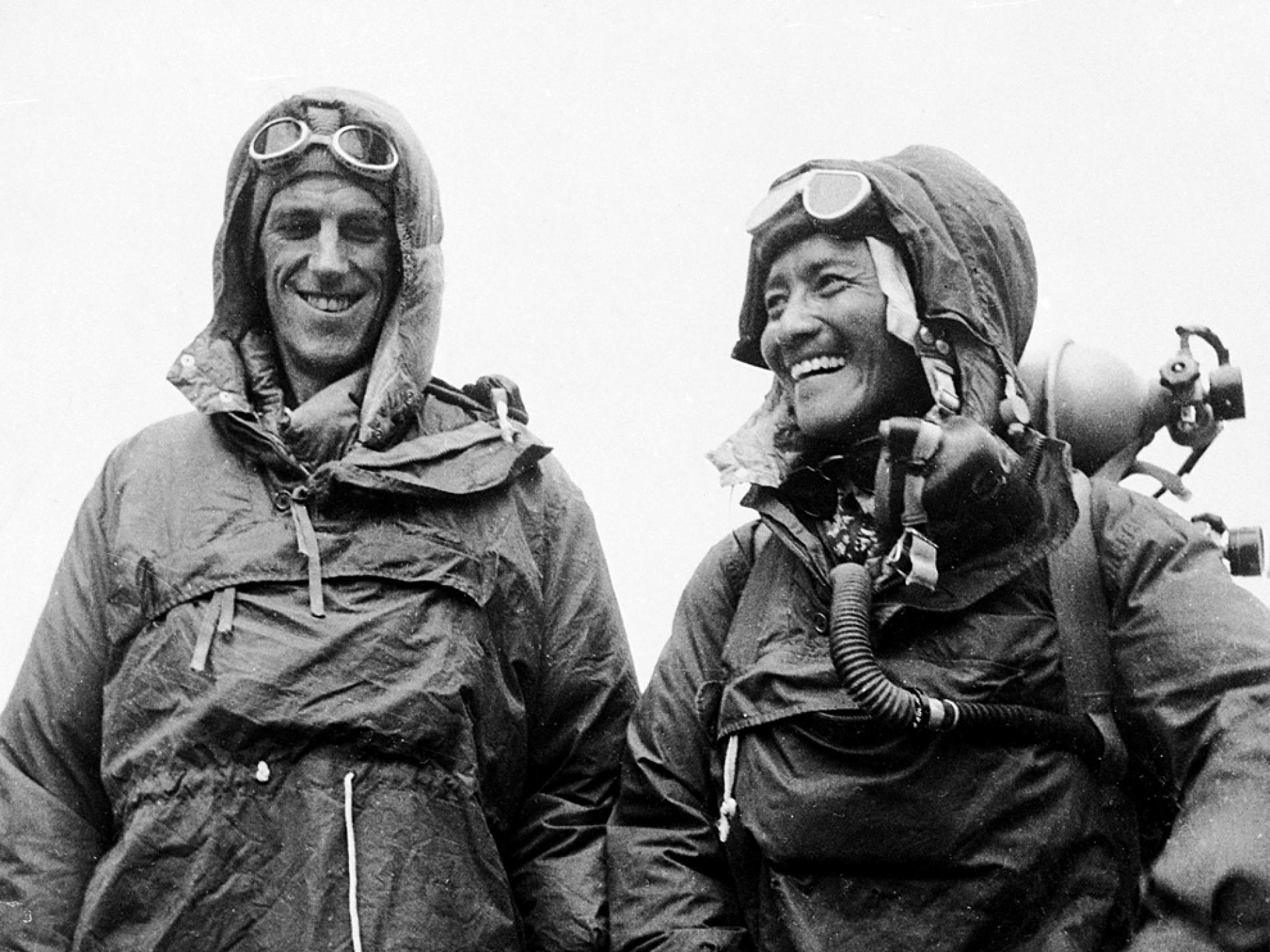
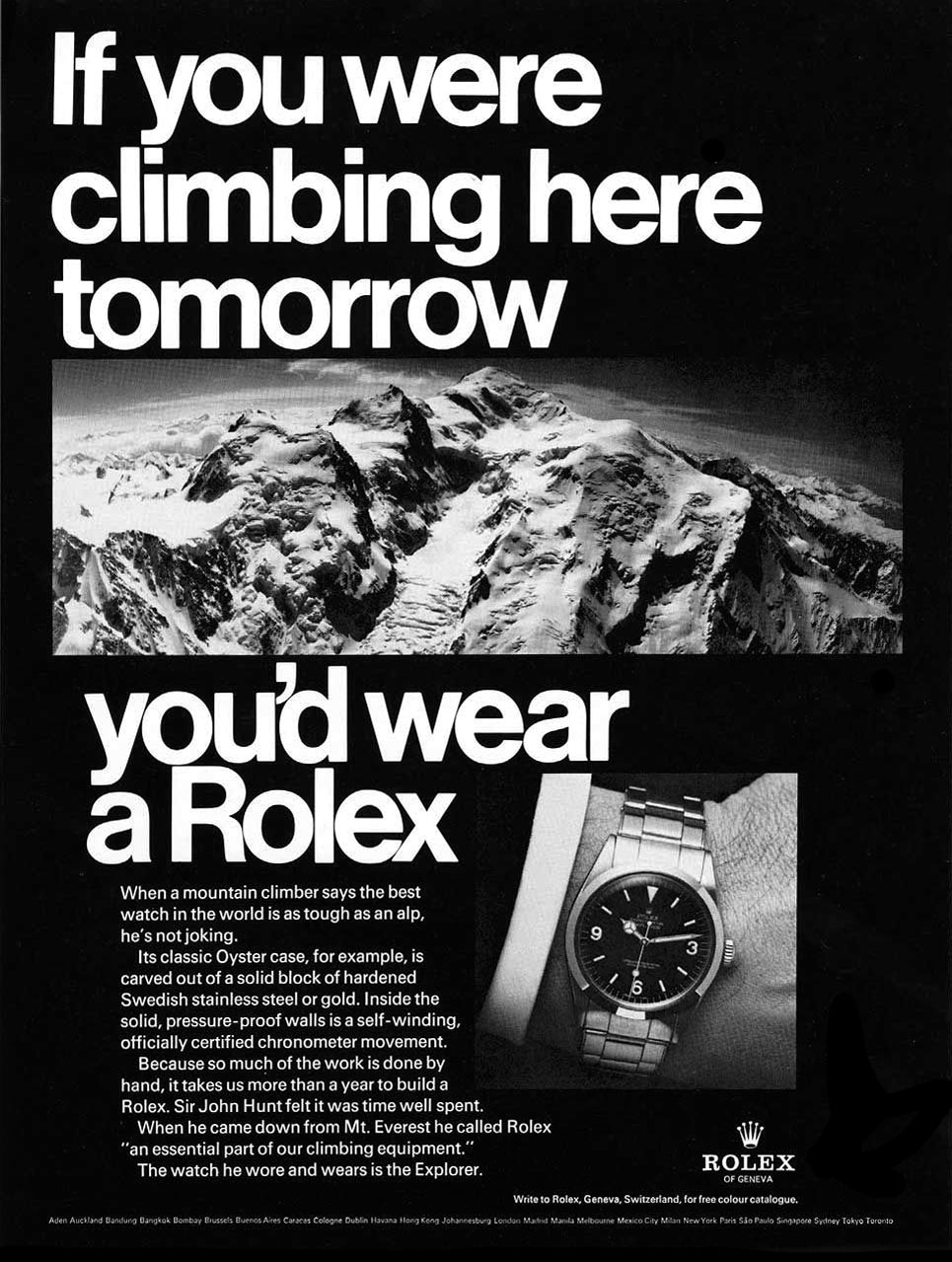
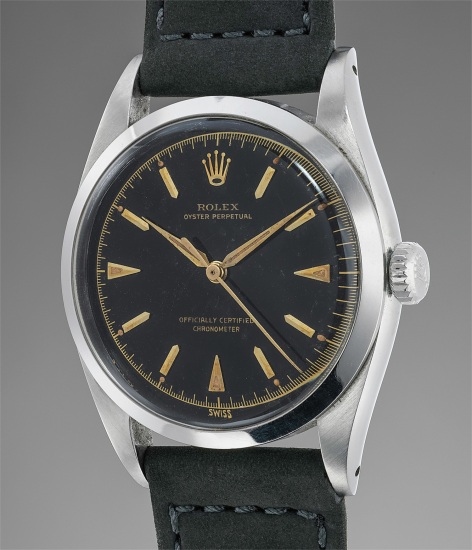
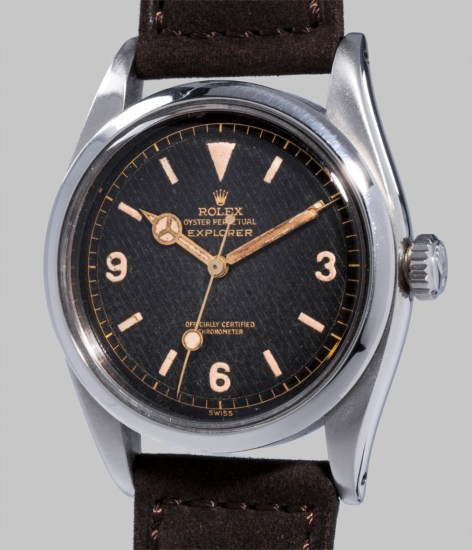
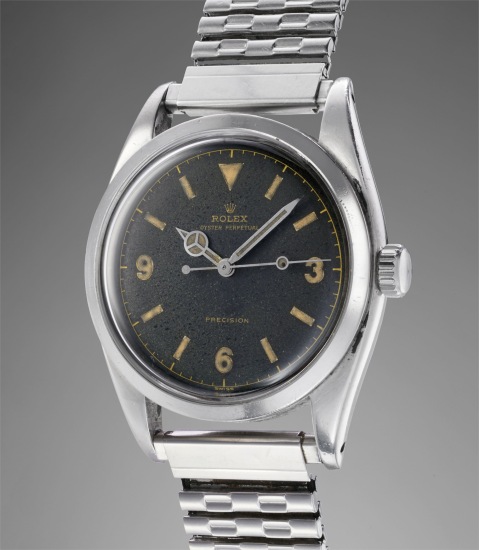
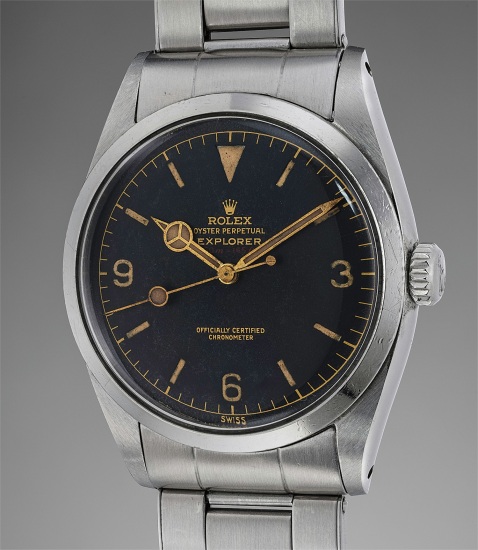
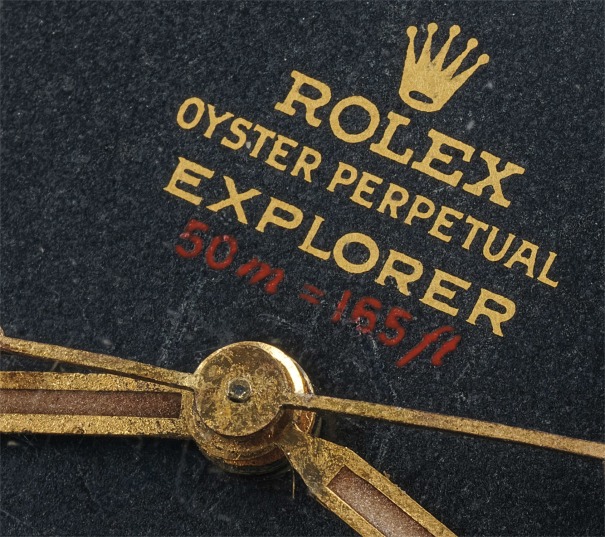
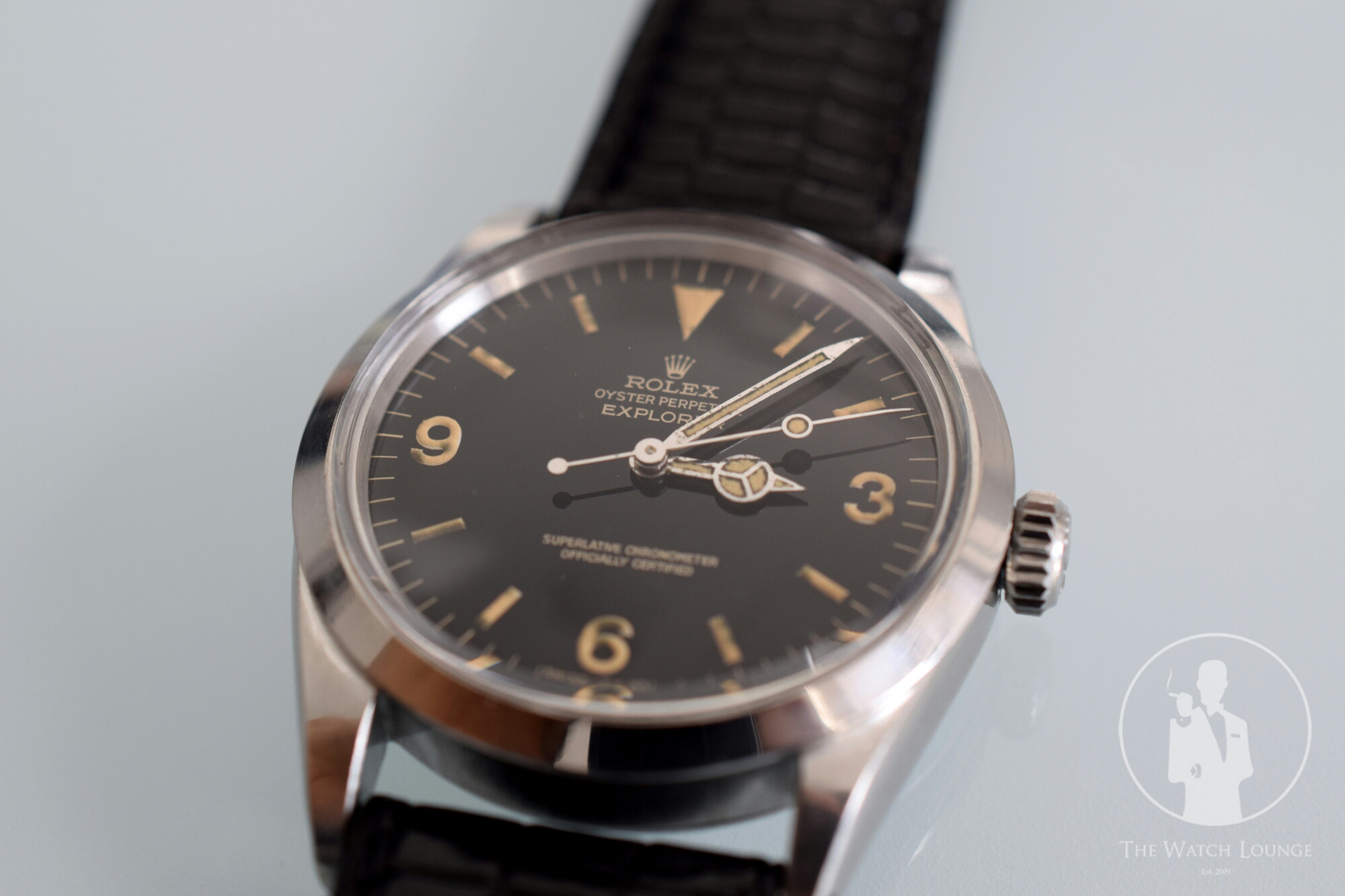
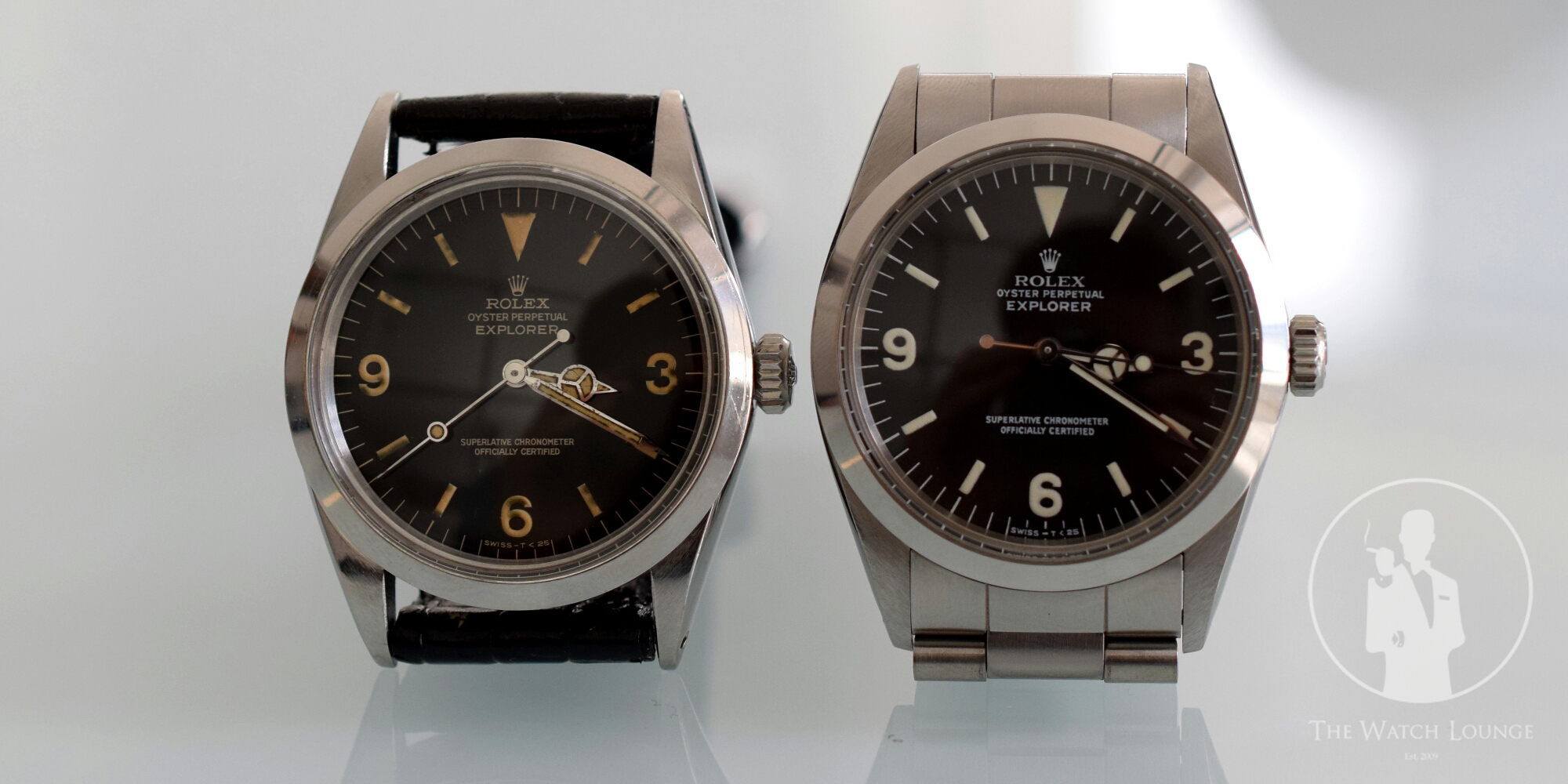
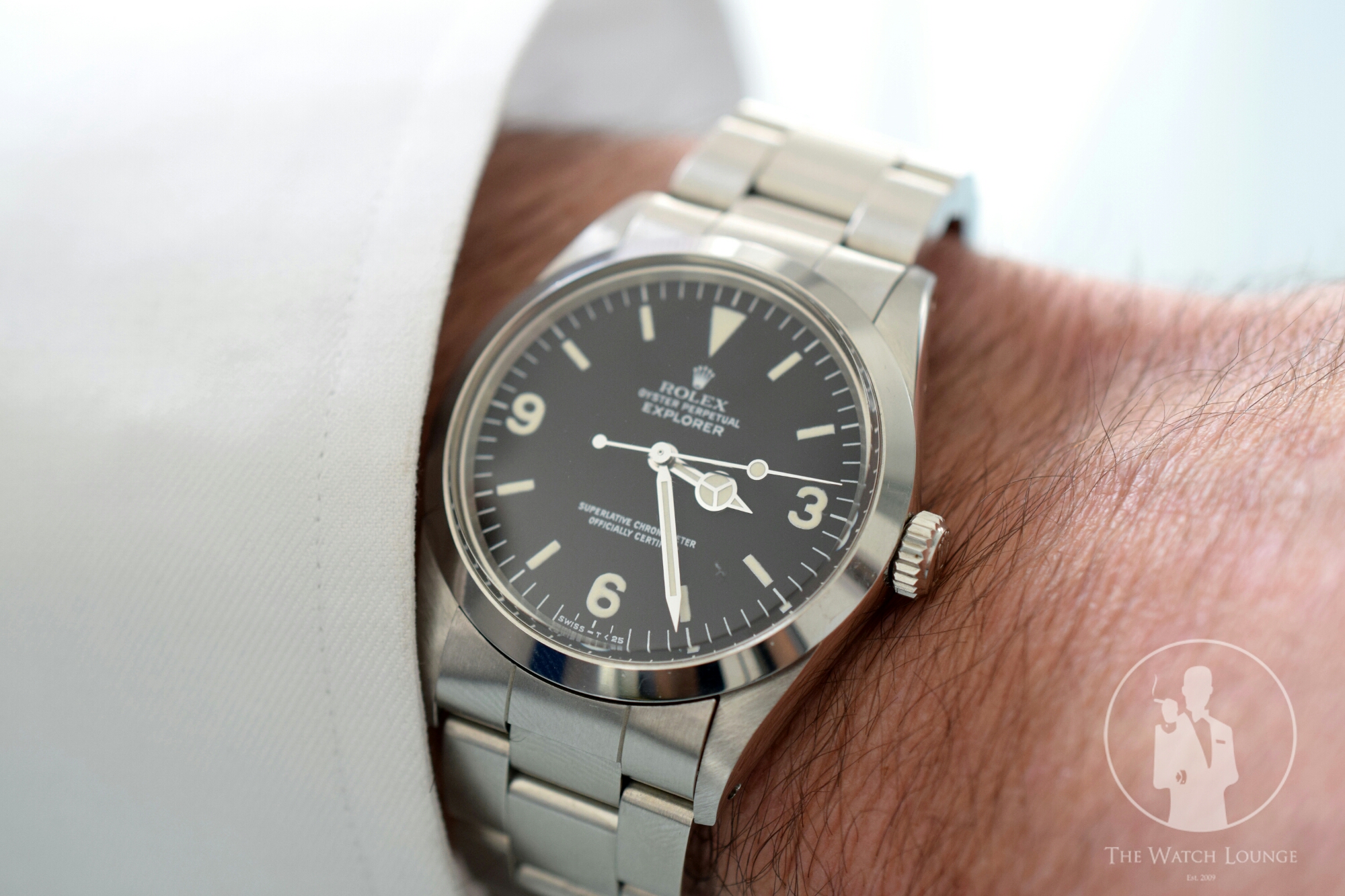
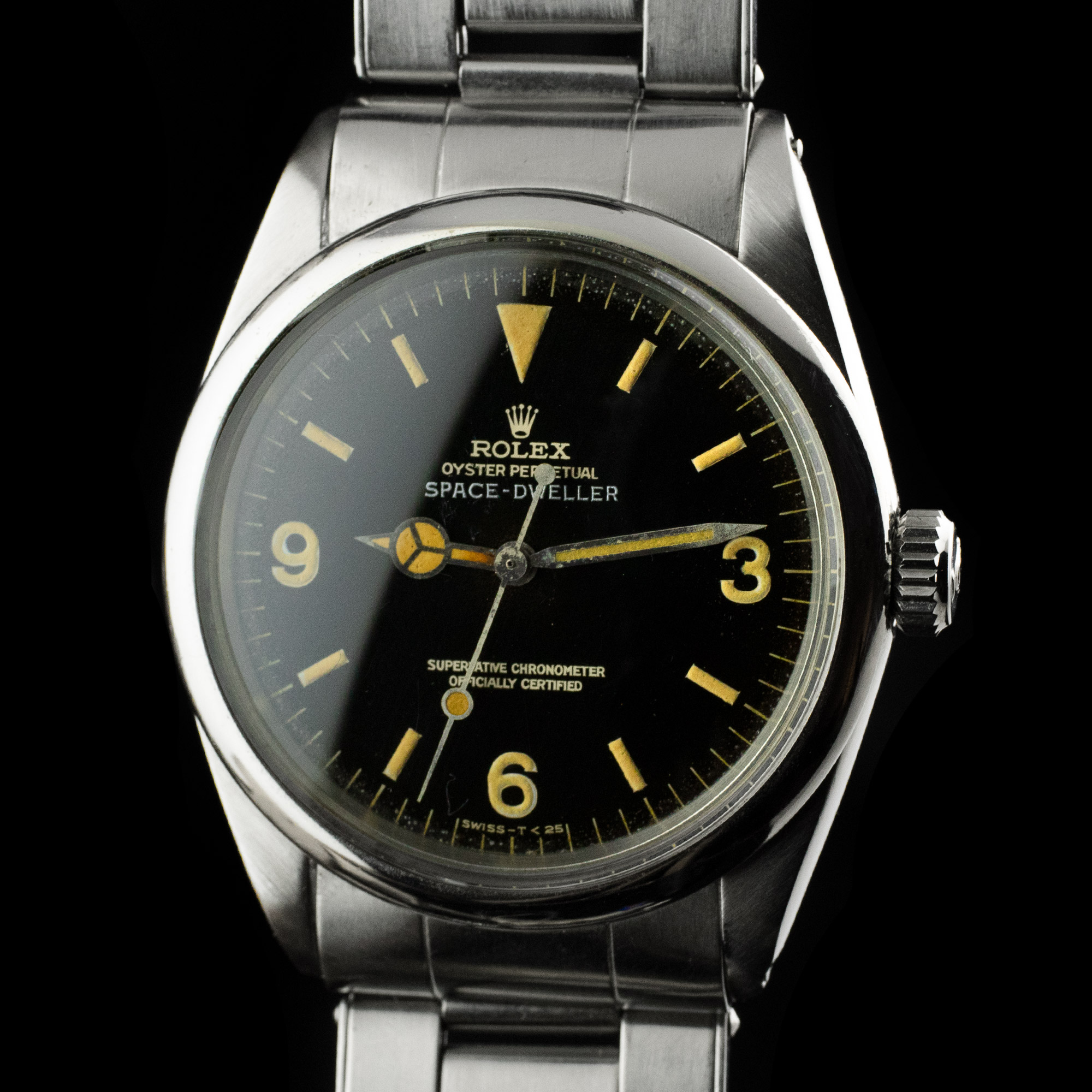
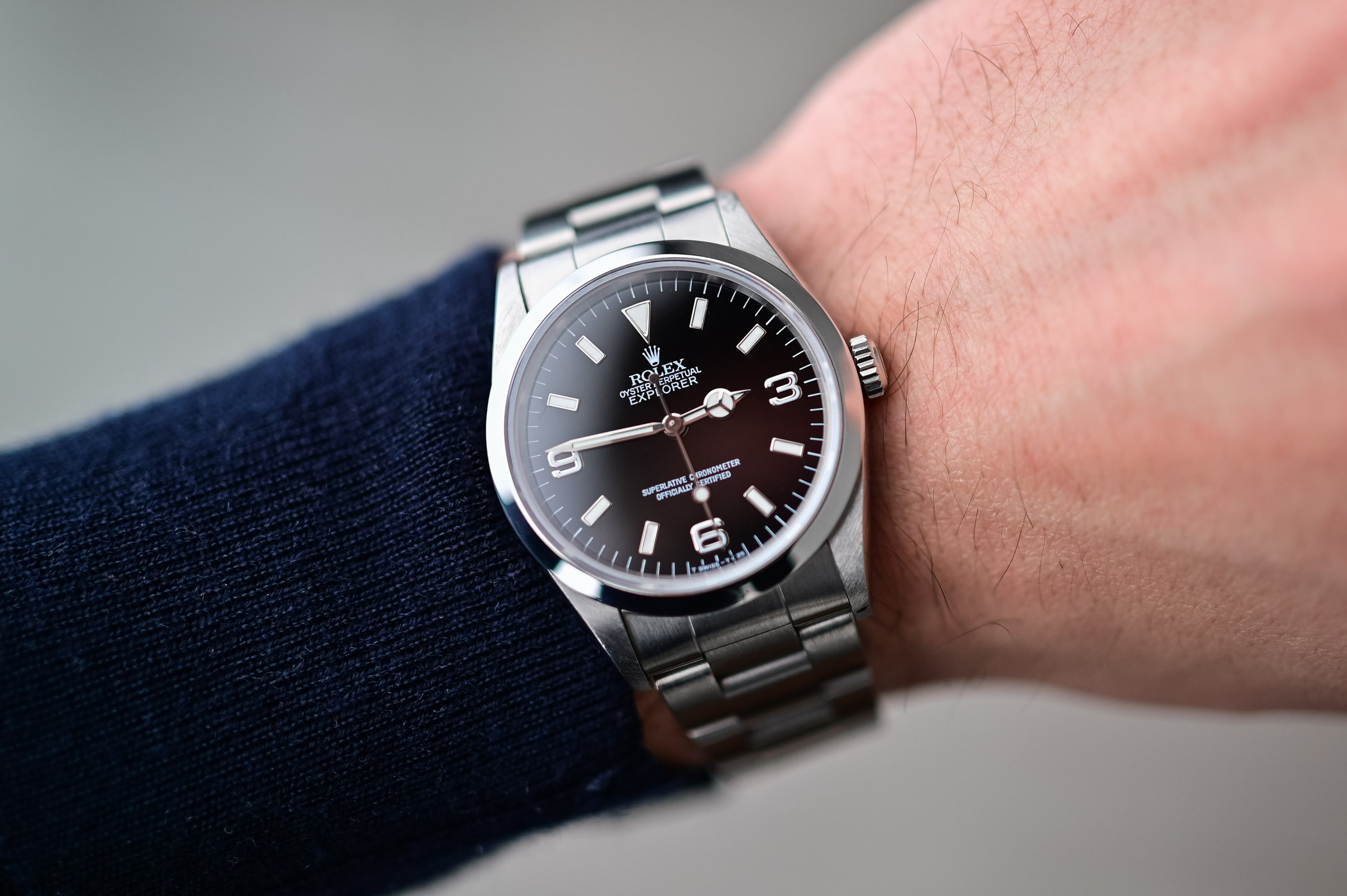
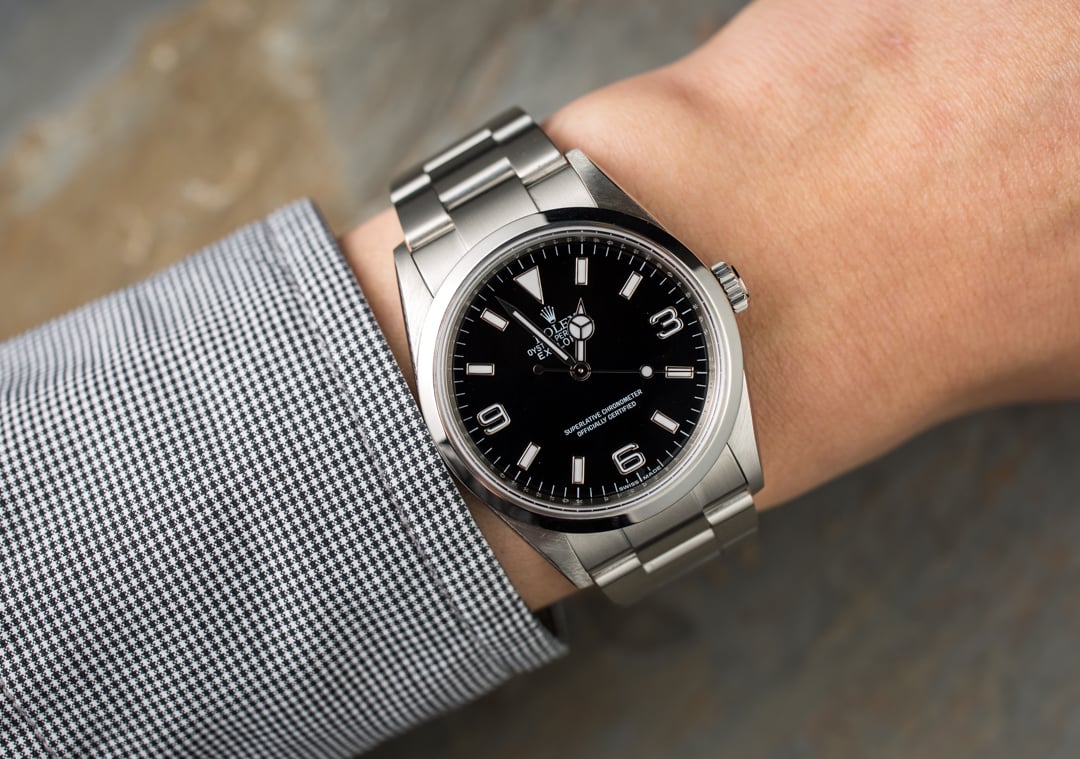
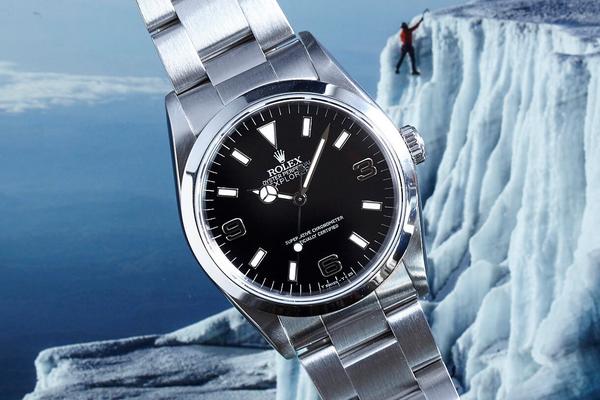
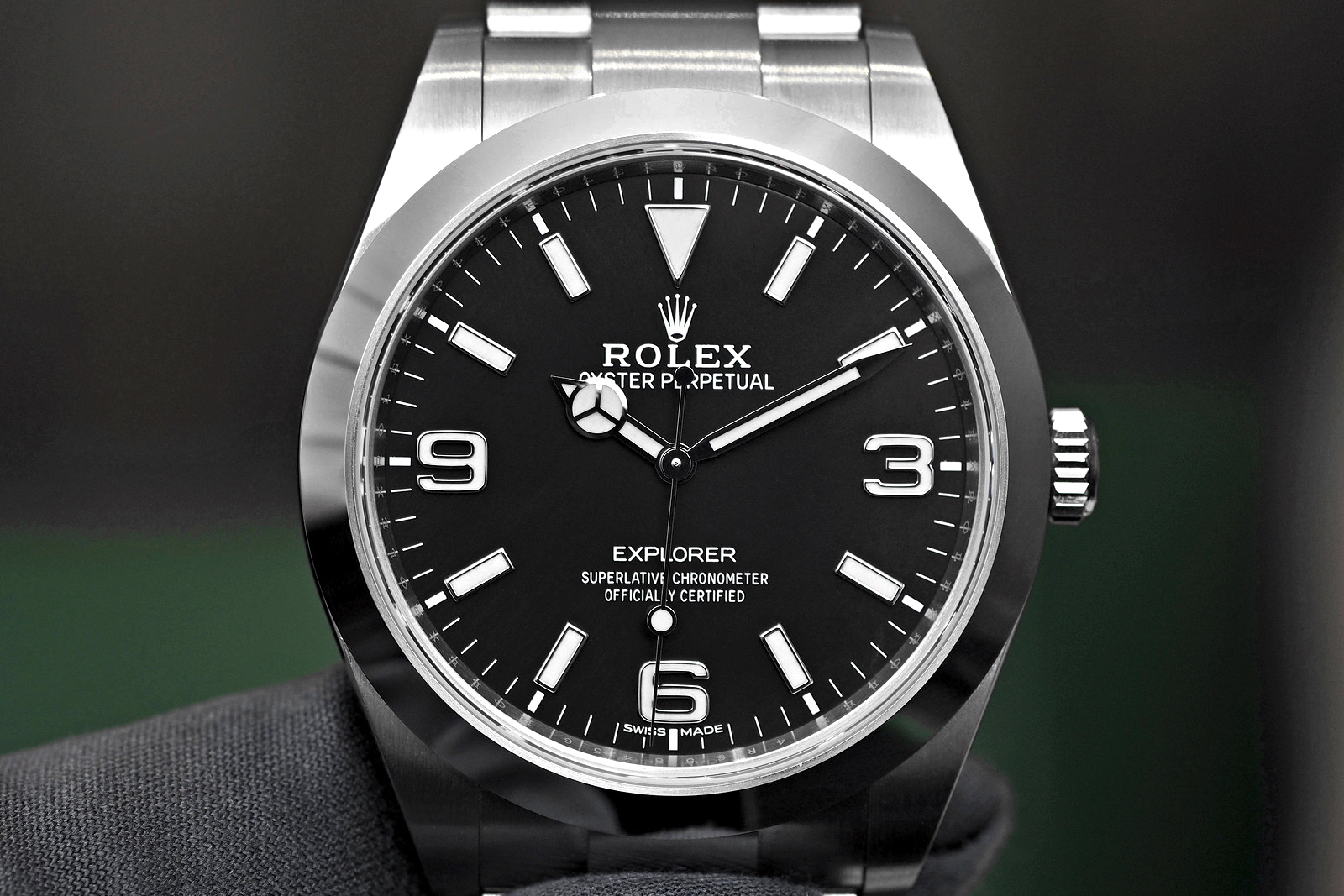
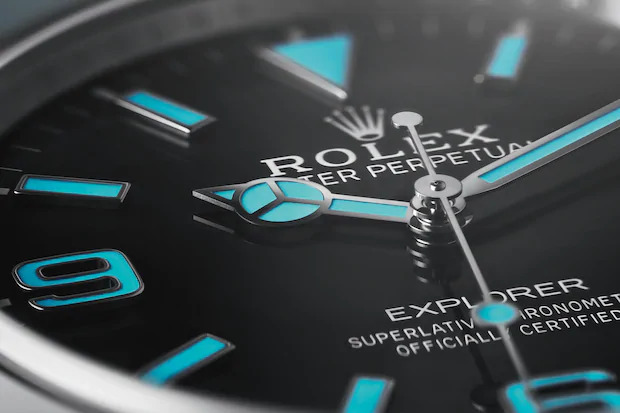
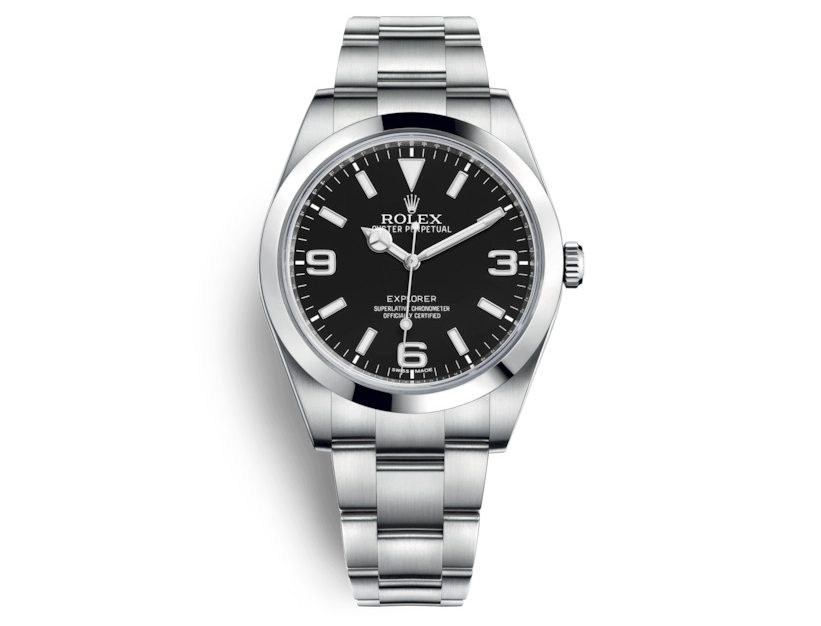
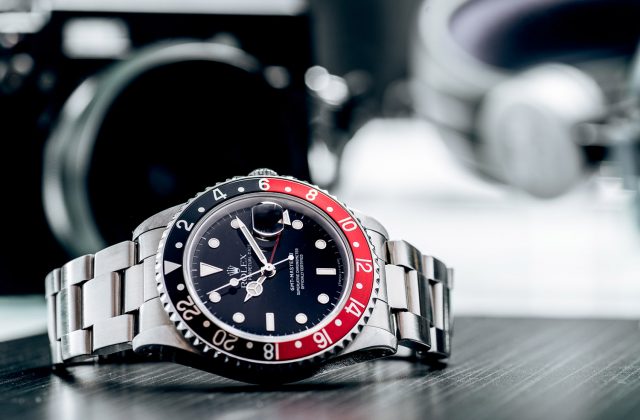
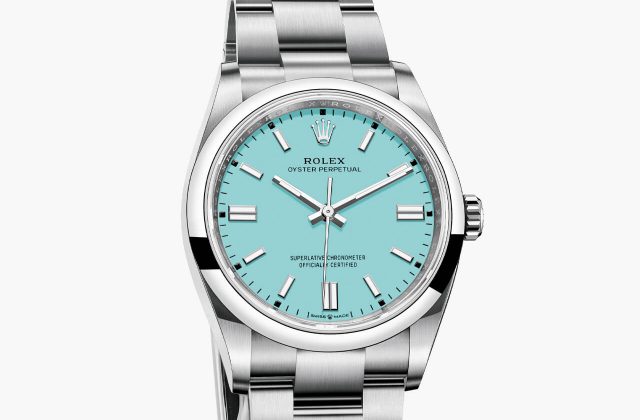
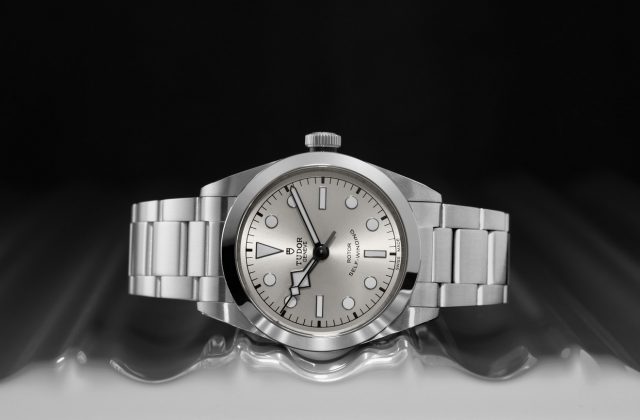
I found the article fascinating Loving watches as I do it is my ambition to own a Sub Mariner one day
At the moment I wear a Seiko kinetic divers
It is a very accurate and robust watch
Thank you again for the article
You’re right about Hillary wearing (or “carrying”) his Smiths to the peak of Everest (most people get that wrong) but Tenzing was not included in the team of 13 to whom Rolex issued Oyster Perpetuals in 52 and 53. He had a gold Rolex (on gold bracelet) given to him in 52 by a Swiss mountaineer, but in all the photos of him on Everest (including colour photos by the RGS) he is wearing a steel watch on a bonklip type bracelet. Unless one of the team lent him a Smiths, this was probably a West End Watch Co Sowar, standard issue in India and Nepal on a bonklip bracelet.